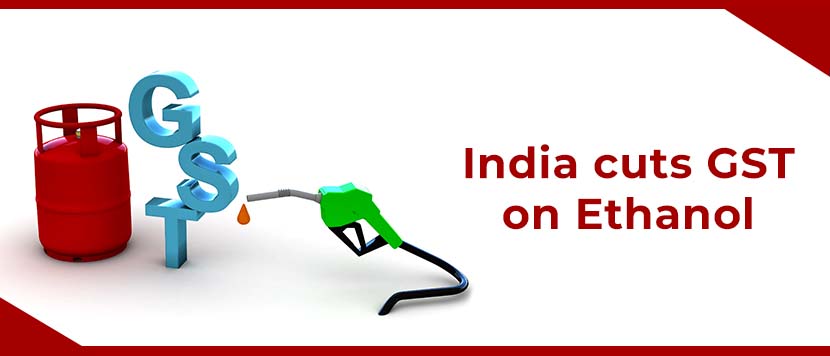India Cuts GST on Ethanol from 18% to 5%

Last Updated: 14th December 2022 - 12:06 am
The government has announced the cut in GST rates on ethanol meant for blending from 18% to 5%. It may be recollected that the government had pushed back the target of 20% ethanol blending in petrol from 2025 to 2030. This sharp cut in GST is in sync with the thrust that the government has been laying on ethanol blending.
Under the Ethanol Blending program, the government has set a target of blending 20% ethanol with petrol and 5% bio-diesel with diesel. When ethanol is blended with petrol, the calorific value comes down but it also substantially reduces the use of fossil fuels and ethanol blended petrol is more environment friendly.
The ethanol blending also has a macro relevance. India currently relies on imports to meet 85% of daily crude oil needs. By moving to 20% ethanol blending, this dependence on imports can be reduced. That is likely to have a salutary impact on the trade deficit as well as reduce the stress on the Indian rupee vis-à-vis the dollar.
In petrol blending, the predominant blending agent is ethanol which is either based on sugarcane, sugar or sugar syrup. The grain based ethanol is relatively much smaller and the government is also keen to encourage sugar based ethanol blending as it also allows to better manage the sugar surplus situation in India.
The reduction of GST is unlikely to have a material impact on the sugar company balance sheets as under the GST rules, any GST cut presupposes 100% pass through to the end customer. Here, the benefit will have to be passed on to the oil marketing companies who procure the ethanol from the sugar companies for the purpose of blending.
But the positive rub-off will be at other levels. Firstly, in the last few quarters, ethanol has contributed more to the EBITDA of sugar companies than the sale of raw sugar. Secondly, lower GST will enable reduced pricing for ethanol blended petrol. This is not only an encouragement for people to shift to blended petrol but also the lower price reflects the lower calorific value in ethanol blended petrol.
Over the last 7 years, the annual ethanol procurement by OMCs has expanded over 9-fold from 38 crore litres to 350 crore litres. A more rational duty structure would be in tune with the government policy to encourage ethanol blending and reduce the international dependence on crude.
Also Read:-
- Flat ₹20 Brokerage
- Next-gen Trading
- Advance Charting
- Actionable Ideas
Trending on 5paisa
Indian Stock Market Related Articles
Disclaimer: Investment in securities market are subject to market risks, read all the related documents carefully before investing. For detailed disclaimer please Click here.
 5paisa Research Team
5paisa Research Team
 Sachin Gupta
Sachin Gupta




